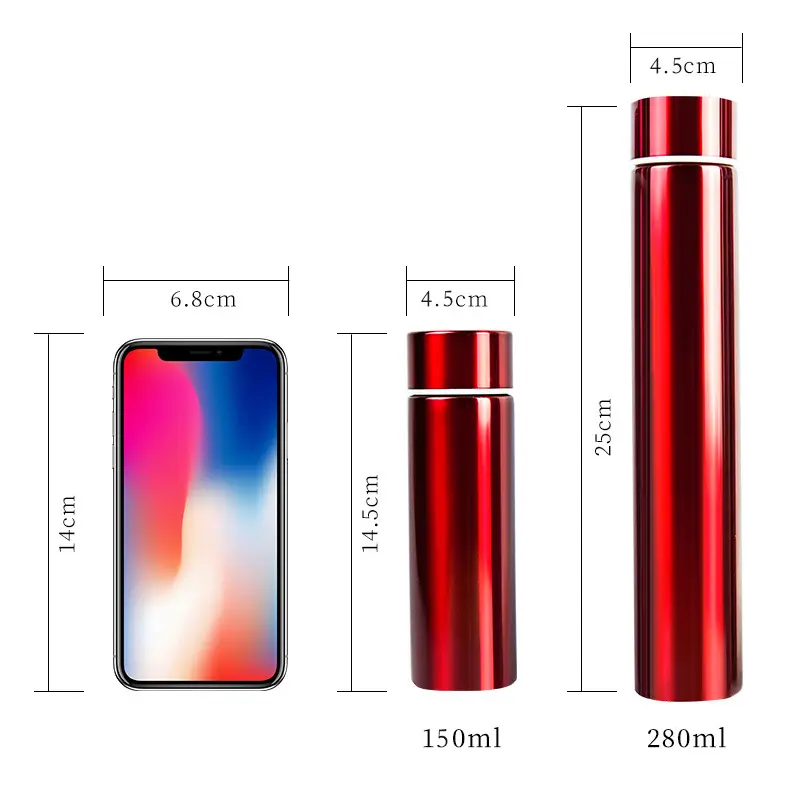Is brewing tea in a thermos cup toxic or causing cancer?
According to scientific rumors refuted, "when people reach middle age, they can't help but soak wolfberry in a thermos cup." Many people have the habit of making tea in athermos cup. However, some people often say that "making tea in a thermos cup is harmful to health" and "making tea in a thermos cup will destroy the nutritional value of tea." Some even say that "using a thermos cup to make tea for a long time will May cause cancer." Recently, the "Scientific Rumor Refutation" WeChat public account also received questions from fans on the backstage, asking whether stainless steel thermos cups can make tea. So, is it alarmist or is it true that tea made in a thermos cup is harmful?

01
What are the materials and insulation principles of the thermos cup?
If you want to know whether making tea in a thermos cup is toxic, let’s first understand the insulation principle of the thermos cup. As the name suggests, a thermos cup refers to a container that can maintain the food inside at a certain temperature. The "insulation" here actually includes two functions: heat preservation and cold preservation. Insulated cups are generally insulated through a vacuum sandwich between the cup body and the double-layer structure of the liner. Some thermos cups further enhance the insulation effect by copper plating on the outside of the liner and using air-absorbing materials in the interlayer. At present, our country has a series of national standards and industry standards to control the quality and technical performance of this type of products, such as "Stainless Steel Vacuum Insulation Containers" (GB/T 40355-2021), "Stainless Steel Vacuum Cups" (GB/T 29606-2013) And "Stainless Steel Vacuum Porcelain Thermos Cup" (QB/T 5613-2021), etc.
A variety of materials are used to produce thermos cups, including common stainless steel, ceramics, glass, etc., as well as plastics, silicone rubber, coatings, plating and other materials. In the national food safety standard system, thermos cups belong to the management category of "food contact materials and products". At present, my country has established a complete national food safety standard system to control the safety of the above materials, such as the "National Food Safety Standard for Glass Products" (GB 4806.5-2016), "National Food Safety Standard for Food Contact Metal Materials and Products" (GB 4806.9-2016) etc. As food contact materials and products, thermos cups must comply with my country's national food safety standards before they can be put on the market.

02
Is making tea in a thermos cup really harmful to health?
The safety risks of food contact materials mainly come from substances that may "migrate" into food and cause health hazards, such as heavy metal elements in metal materials, certain monomers and additives in plastic materials, etc. my country's national food safety standard system for food contact materials stipulates a series of restrictive requirements for various materials, including the limits of harmful substances, the use scope of different materials and restricted use conditions, etc., to ensure that food contact materials are not used during normal use. It will cause harm to human health. The restricted use conditions specified in the standard or the precautions for the use of food contact materials themselves should be marked on the product label or instructions.
For thermos cups, their common use case is mainly to hold various hot and cold foods for a long time, including making tea. Therefore, as long as you purchase qualified products and use the thermos cup to make tea reasonably according to the product label or instructions, it will not cause harm to human health.
03
What should you pay attention to when making tea in a thermos cup?

From the perspective of food safety: 1. When purchasing a thermos cup, you should pay attention to selecting a thermos cup with information such as manufacturer, production date, and certificate of conformity through formal channels.
- Carefully clean the cup body, cup lid and rubber pads before first use to prevent residual processing aids or contaminants during processing, storage and transportation from migrating into the food and causing health hazards.
- Since thermos cups are made of various materials, and their uses include heat preservation and cold preservation, you should pay attention to the label, instructions and other information of the thermos cup before choosing a thermos cup to make tea. For example, a thermos cup that is only used to keep cold may not be suitable for holding higher temperature tea, but can be used to make cold brew tea.
- Thermos cups usually have complex structural designs and have hygienic dead ends that are difficult to clean, such as sealing gaskets, pop-up lids, cup mouth threads, etc. Pay attention to timely cleaning after use to avoid dirt accumulation and microbial reproduction.
- For thermos cups with surface coating, attention should be paid to protecting the coating when cleaning. Damage to the surface coating may cause coating fragments to peel off, or make it easier for substances in the coated substrate to migrate into the food. Therefore, once the coating is damaged, the thermos cup should be replaced in time.
- If the material of the thermos cup is severely worn, yellowed, blackened or cracked, the thermos cup should be replaced in time.
Analysis from a sensory perspective: 1. Since the thermos cup can keep the temperature of the contents stable for a long time, when making tea, attention should be paid to controlling the brewing temperature and time according to the type of tea to avoid affecting the quality and taste of the tea soup.
- Some metal thermos cups may migrate elements with a "metallic taste", such as iron, while some silicone rubber materials may have a unique odor of the material itself. Although the above situation does not cause food safety problems, and some tastes or odors can be eliminated or reduced through thorough cleaning, consumers with higher sensory requirements can choose thermos cups made of other materials according to their own needs.










